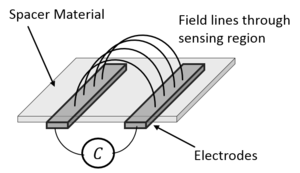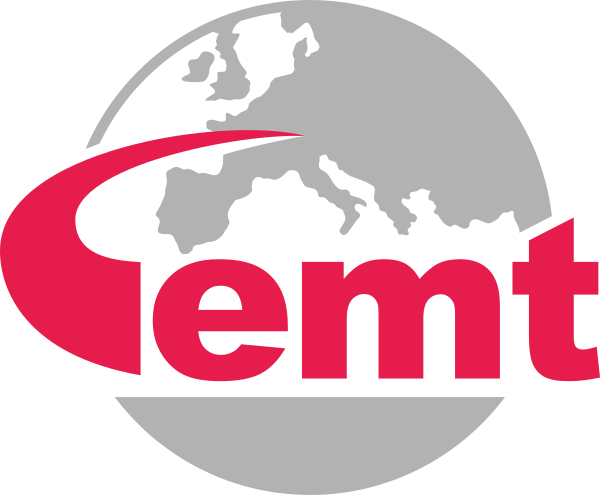Capacitive Technology
Capacitive measurement techniques are well established in science and industry. Advances in electronics continously extend the fields where they are applicable. Main advantages of capacitive technology are simplicity, high accuracy and resolution over the total measurement range, excessive temperature operating capabilities, insensitivity to dirt, moisture and dew.

Figure 1: Illustration of a planar capacitive sensor.
The versatility of capacitive sensors originates from the fact that different sensing modalities are possible. The range spans from classical sensors for industrial applications, e.g. distance or force measurement, up to imaging systems like electrical capacitance tomography (ECT). For sensor like distance sensors, an electrode configuration has to be designed, to create a measurement capacitance with a well defined relation between the measurand and the measurement capacitance. Cross sensitivities have to be reduced, in order to achieve a reliable sensor design. In contrast, applications like ECT require model based signal processing methods to gain knowledge from the capacitive measurement readings. Between this two applications, capacitive technology also allows the creation of new measurement systems. An example is given by capacitive sensing of atmospheric conditions on power grids for online condition monitoring. These applications require modified electrode geometries for the sensor frontend. An exemplary electrode scheme for a sensor to monitor surface conditions is depicted in figure 1. In combination with model based signal processing methods, capacitive sensing can be used to enable new measurement systems. Find more information about capacitive sensing in the list of research topics of the I&M group